The TransFert Program
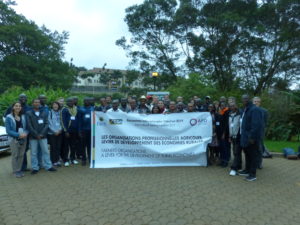
From the 16th of June 2019 up until the 21st of June 2019, 40 representatives from Fert and Fert’s professional agricultural partner organizations met in Kenya for the fourth annual meeting of the TransFert program.
TransFert is an annual program that brings together Fert’s professional agricultural partner organizations for exchange-based learning in a selected host country. It was initiated in 2015.
CGA has been working with Fert as a technical partner since 2013 and was proud to host the representatives from France, Madagascar, Ivory Coast and Burkina Faso in Kenya. This is after Madagascar hosted the TransFert program in 2015, Burkina Faso in 2016 and France in 2017. The group of representatives comprised of farmers, technical advisors, farmer association representatives, and varying staff and project managers from Fert.
Jean-François Isambert, the Chairman of Fert and also a farmer in France introduced Fert and the TransFert program as one that seeks to enrich the experiences of farmers within the program through capacity building towards sustainability and peer learning.
Anthony Kioko, the Chief Executive Officer gave an official welcome statement and presented CGA’s strategic focus and the milestones achieved through partnership with Fert.
After a short briefing session on the week’s agenda, the group was divided into two teams and as one team left Nairobi for Narok, the other left for Nakuru.
Field Activities
The Nakuru team began with a visit to Vincent Chelule’s farm in Njoro. Chelule who is a model farmer in Njoro who offers free advisory to other farmers. Chelule had a lot of ideas to share with the visiting farmers having been engaged by KALRO in seed multiplication. The 120 days maturity period of the wheat varieties he grew was also noted as impressive. Thereafter, the team had a discussion with members of the Nakuru County platform where Chelule is also a member.
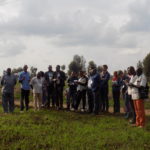 Next, the group visited a learning site in Njoro where Salome Muthoni was the host farmer. Salome is a member of Rumwe self-help group, and she had provided her land as a learning site. The learning site made it easier for CGA’s Field Agribusiness Coordinator together with the lead farmers in the area to guide farmers on the best agronomic practices. This was in addition to testing different variants such as different seed varieties, different forms of fertilizer and so on in order to identify what worked best in that area.
Next, the group visited a learning site in Njoro where Salome Muthoni was the host farmer. Salome is a member of Rumwe self-help group, and she had provided her land as a learning site. The learning site made it easier for CGA’s Field Agribusiness Coordinator together with the lead farmers in the area to guide farmers on the best agronomic practices. This was in addition to testing different variants such as different seed varieties, different forms of fertilizer and so on in order to identify what worked best in that area.
The next stop for the Nakuru team was in Salgaa where Nahson Ngetich a member of the CGA Board of Directors showcased modern farming techniques and diversification. Nahson showcased his seed multiplication venture for boma rhodes pasture grass, finger millet, and maize.

While all this was happening, the Narok team was also engaged in field visits which had kicked off in Mashariani at John Teeka’s farm. John Teeka is also a member of the CGA Board of Directors. He shared CGA’s role in organizing the wheat marketing scheme for Kenyan wheat farmers which had helped to maintain the price of wheat at decent levels since its instigation in 2016. Through the interventions of CGA through the scheme, wheat prices had risen from Kshs 2,200 to Kshs 3,200 per 90kg bag.
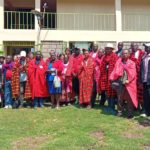
Next, the team visited Meguara farmer’s cooperative a cooperative in Transmara that is actively involved in the joint marketing of cereals for its members under the mentorship of CGA. Under the leadership of Simion Koiseta who is also a model farmer, the cooperative has grown to a current membership of 420 active members. The team also visited Koiseta’s farm. The Nakuru team, on the other hand, visited Ng’arua cereals and produce cooperative society, a farmer’s cooperative that was involved in grain marketing in Laikipia county.
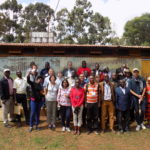
There was so much to learn from these field visits for the visitors and the hosts in equal measure as both teams got to exchange practical ideas and shared experience-based solutions to the different challenges they each faced.
Feedback Sessions
On Wednesday the 19th of June, both teams reconvened together in Nakuru for a feedback session where teams got to share what they had learned in each of their visits.
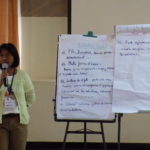
One of the things that stood out the most from both teams was the great strides that farmers had made, working together. Both teams agreed that the great milestones observed during the field visits were only possible because the farmers had come together to jointly pursue a common goal. The learning sites had proven to be a great avenue for farmers to learn and implement better agronomic practices.
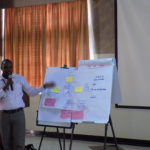
The CGA lead farmers also found it easier to pass down practical skills to farmers through the learning sites.
In the learning sites, farmers tested different variances in crop production and draw practical conclusions of what worked best in terms of production and under what circumstances. Some of the variances that the farmers tested in the learning sites include the overall outcome of testing the soil and applying fertilizers based on the soil test results. For example, the comparative analysis in the use of bio-fertilizers versus conventional fertilizers was tested.
Stakeholder’s TransFert Conference
To crown the activities of the week there was a conference on Thursday the 20th of June to discuss the lead farmer model and how it would be made sustainable. The lead farmer model is a farmer training model where a lead farmer is selected within a certain locality and equipped with the knowledge to supplement agriculture extension services which the lead farmer then transfers to other farmers.
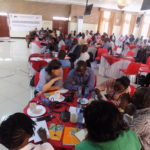
The conference brought together different actors in the agriculture sector and had lead farmers and trainers from participating countries sharing as panelists. As the panelists shared their experiences and ideas on what would make the lead farmer model of farmer extension sustainable, conference participants also made worthy contributions to the leader farmer training model.
The lead farmer training model had only just started, having been rolled out in Kenya through CGA in 2018. Madagascar and Burkina Faso, on the other hand, had more experience with the model, having rolled it out in 2008 and 2009 respectively. As a result, the lead farmers from Madagascar and Burkina Faso had a lot more practical lessons to share with their Kenyan counterparts.
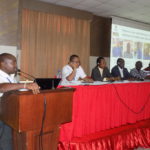
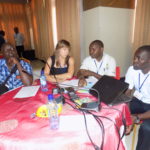
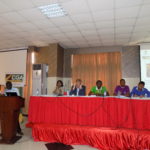
As the eventful week came to a wind-down, all participants agreed that the exchange had equipped them with the capacity to be better producers or facilitators of better production.
